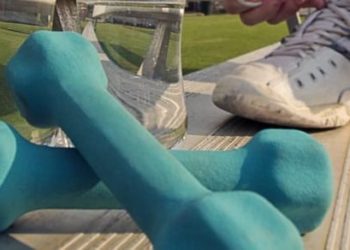Compression ultrasound identifies proximal deep venous thrombosis with high sensitivity and specificity [Classics Series]
This study summary is an excerpt from the book 2 Minute Medicine’s The Classics in Medicine: Summaries of the Landmark Trials
1. Vein compressibility assessed with ultrasonography (US) was highly sensitive and specific for the diagnosis of proximal-vein deep vein thrombosis (DVT) when compared to contrast venography.
2. Isolated calf-vein thrombosis could not be reliably detected through compression US.
Original Date of Publication: February 1989
Study Rundown: DVT refers to the formation of a blood clot within a deep vein, most commonly at or above the knee, such as the popliteal, femoral and iliac veins. If left untreated, patients are at risk for fatal pulmonary embolism. Diagnosis based on clinical signs and symptoms, however, is unreliable, necessitating the use of more objective testing. Historically, this has included contrast material phlebography, a technique that was later replaced by non-invasive tests such as phleborheography and impedance plethysmography. Impedance plethysmography reliably identifies occlusive thrombi in the proximal veins (popliteal, femoral or iliac veins), but is less reliable in the detection of non-occlusive proximal DVT and thrombi found in the calf. As such, other methods of DVT detection emerged, including US. While many different US diagnostic criteria had been initially proposed, Cronon and colleagues demonstrated that vein compressibility assessed through US could be used with high sensitivity and specificity in detecting DVT.
In this larger prospective study later conducted by Lensing and colleagues, gold standard contrast venography was compared to real-time B-mode US using the single criterion of vein compressibility. The results of this study showed that US had high sensitivity and specificity in the detection of proximal-vein thrombosis. Isolated calf-vein thrombosis, however, was not reliably detected through US, limiting its sensitivity for thrombi in this location. The study also found visualization of an echogenic band in the proximal veins to be a highly sensitive but non-specific criterion for proximal-vein thrombosis. Changes in vein diameter during the Valsalva maneuver were neither sensitive nor specific.
Click to read the study in NEJM
In-Depth [prospective cohort]: All outpatients with suspected DVT were referred for evaluation and consecutively screened for enrollment (n=233). Key exclusion criteria included anticoagulant treatment for more than 48 hours before referral, known allergy to contrast material, or a recent episode of DVT in the past year. Following screening and consent, each patient underwent US of the symptomatic leg, where only the common femoral and popliteal veins were scanned. Compressibility of both veins was considered a negative test result, while non-compressibility of one or more veins was considered positive for venous thrombosis. Contrast venography was subsequently performed within 2 hours of US and interpreted by a radiologist blinded to the results of US. In a subset of 45 patients, US was repeated by an independent examiner to determine interobserver agreement on compressibility.
Contrast venography and US was successfully performed in a total of 220 patients (median age 56 years, range 17-86; 56% women). Based on the reference standard (venography), 66 patients were found to have proximal-vein thrombosis. Calf-vein thrombosis was confirmed in 11 patients. On US, all 66 cases with proximal-vein thrombosis were found to have non-compressible common femoral veins, popliteal veins or both. Therefore, the sensitivity of US in detecting proximal-vein thrombosis through non-compressibility was 100% (95%CI 95-100%). Of the 143 patients without DVT on venography, 142 had fully compressible proximal veins on US, yielding a specificity of 99% (95%CI 97-100%). The sensitivity of US in detecting calf-vein thrombosis, however, was limited to only 36% (95%CI 11-70%). Interobserver agreement on compressibility was 100% (kappa = 1). The study also found visualization of an echogenic band in the proximal veins to be highly sensitive (99%) but not specific (52%) in DVT detection. The percent change in vein diameter during Valsalva maneuver proved to be of limited use in detecting DVT with a sensitivity and specificity of 55% and 67%, respectively.
Lensing AW, Prandoni P, Brandjes D, Huisman PM, Vigo M, Tomasella G, et al. Detection of deep-vein thrombosis by real-time B-mode ultrasonography. The New England Journal of Medicine. 1989 Feb;320(6):342-5.
Additional Review:
Cronan JJ, Dorfman GS, Scola FH, Schepps B, Alexander J. Deep venous thrombosis: US assessment using vein compression. Radiology. 1987 Jan;162(1):191-4.
©2022 2 Minute Medicine, Inc. All rights reserved. No works may be reproduced without expressed written consent from 2 Minute Medicine, Inc. Inquire about licensing here. No article should be construed as medical advice and is not intended as such by the authors or by 2 Minute Medicine, Inc.





![The ABCD2 score: Risk of stroke after Transient Ischemic Attack (TIA) [Classics Series]](https://www.2minutemedicine.com/wp-content/uploads/2013/05/web-cover-classics-with-logo-medicine-BW-small-jpg-75x75.jpg)

